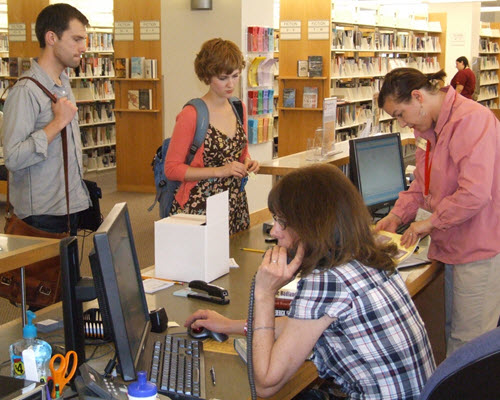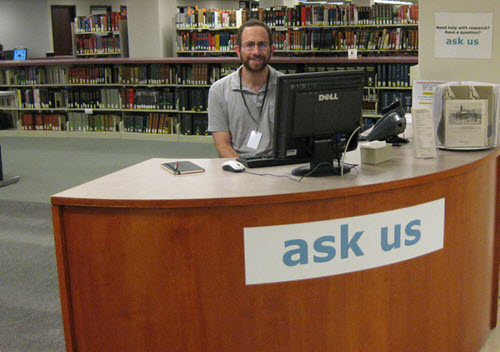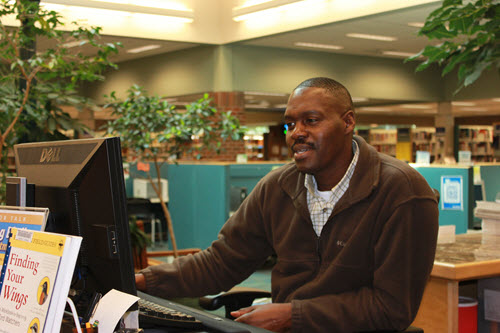The Reference Interaction
Fusion of Modern and Traditional Reference Services
 Each reference interaction between a librarian and patron is an opportunity for mutual learning within a shared space. The patron communicates their information needs while the librarian, using probing questions, seeks to provide the appropriate resource.
Each reference interaction between a librarian and patron is an opportunity for mutual learning within a shared space. The patron communicates their information needs while the librarian, using probing questions, seeks to provide the appropriate resource.
In the WebJunction webinar, Reference Services: Tried, True, and New, Vanessa Irvin Morris, Assistant Teaching Professor at the College of Computing and Informatics at Drexel University explains, "Every experience is the answer to a reference question." Every reference and life interaction provides the tools a librarian needs to successfully answer reference questions.
Morris highlights that librarians continue to learn after the reference transaction is complete. Librarians reflect on each reference interaction – from the probing questions to resources used – to build on improving future reference interactions.
Qualities of the Contemporary Librarian
As librarians learn from their daily reference interactions, they then share new learning with their patrons. Librarians, as a natural outcome of what they do, are educators. This is seen through educating patrons about information resources, technology and library services. There are qualities in the contemporary librarian that lead to providing successful patron interactions. These qualities include:
- Passion for technology
- Desire to teaching
- Commitment to customer service
- Knack for creating content
- Sharp reference skills
Librarians need to have a vast knowledge of tried and true reference resources which include, print, electronic and audio visual materials. Having a vast knowledge of these resources allows for the patron to have a broad selection of resources for answering customer questions and meeting information needs.
 Traditional and Nontraditional Reference Services
Traditional and Nontraditional Reference Services
There are several ways of successfully providing reference services to the library patrons. At the core of reference service is the reference interview where the patron needs and librarian skills meet. The patron seeks to explain their reference needs while the librarian listens for clues. By being socially accessible and culturally competent, the librarian is better equipped to understand the dynamics and diversity of their service area and provides the best service based on those specialized needs. Reference services can be provided in traditional and nontraditional models. These different avenues of reference services can meet the diverse needs of a community and can be explained in three models:
- Roving Reference: meet the patron where they are, be mobile within the library space. Moving among the stacks allows the librarian to be available on an as needed basis for the library patron.
- Outreach reference: being visible in the community and connecting with patrons face to face. Participating in community events and providing program is an opportunity to teach the public about library services and resources.
- Virtual reference: phone, text, chat. Technology allows for the immobile, distance or tech-savvy patrons to use library services.
 Igniting the Patron's Sense of Wonder
Igniting the Patron's Sense of Wonder
The reference interaction is an opportunity for librarians to ignite a patron's sense of wonder about the endless paths of learning found within library resources. Honoring resources such as Google and Wikipedia are opportunities to teach patrons to successfully use these resources. The patron and librarian work together toward lifelong learning and exploration.
Ultimately, librarians are lifelong researchers, learners and readers, always looking forward and developing their skills and providing information needs to their patrons.
Visit the webinar archive page to view the full recording, look at slides, read the chat transcript, and find other helpful resources.
